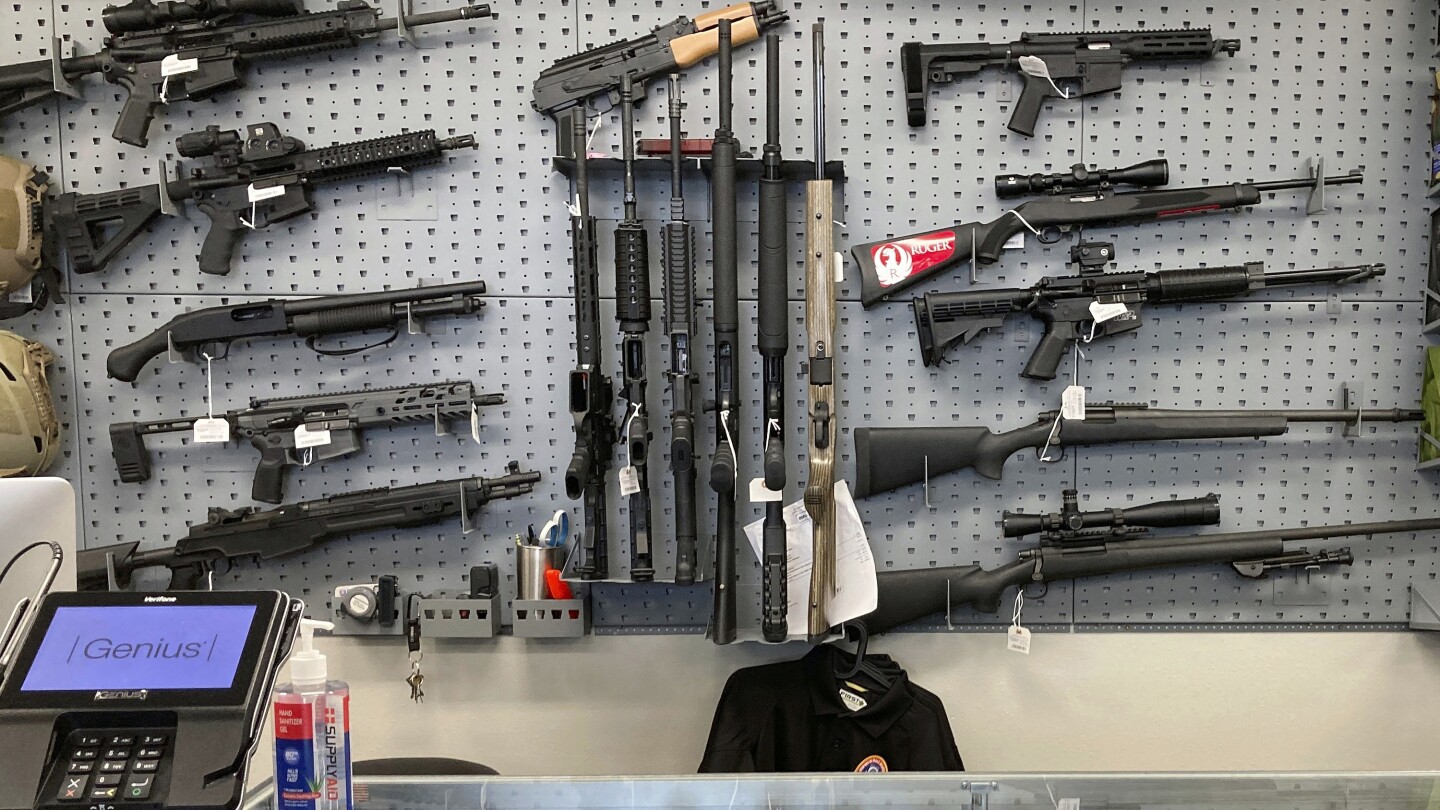A voter-approved Oregon gun control law violates the state constitution, a judge ruled Tuesday, continuing to block it from taking effect and casting fresh doubt over the future of the embattled measure.
The law requires people to undergo a criminal background check and complete a gun safety training course in order to obtain a permit to buy a firearm. It also bans high-capacity magazines.
The plaintiffs in the federal case, which include the Oregon Firearms Federation, have appealed the ruling to the 9th U.S. Circuit Court of Appeals. The case could potentially go all the way to the U.S. Supreme Court.



Aww, don’t be shy, tell us what his motivations were. It was to keep us safe from tyranny right?
Nope, he was concerned Congress couldn’t be relied on to arm the militas they used for slave control. He wasn’t even shy about it. Is this something that’s still important to you? How many school shootings would you say its worth?
Of course, he also spoke of how “An armed and trained militia is the firmest bulwark of republics”, so I guess you’ve only got a small pool of quotes to choose from where he doesn’t undermine your case.
But hey, if “well regulated” means “able to murder unarmed black people”, the pro-gun community really has built a well regulated militia, because some far-right fuckstain does that almost every month.
Edit: Oh look, here’s a well regulated militia now.
Oh, it was VERY much in fear of slave rebellions. That’s an established fact:
https://www.npr.org/2021/06/02/1002107670/historian-uncovers-the-racist-roots-of-the-2nd-amendment
“It was in response to the concerns coming out of the Virginia ratification convention for the Constitution, led by Patrick Henry and George Mason, that a militia that was controlled solely by the federal government would not be there to protect the slave owners from an enslaved uprising. And … James Madison crafted that language in order to mollify the concerns coming out of Virginia and the anti-Federalists, that they would still have full control over their state militias — and those militias were used in order to quell slave revolts. … The Second Amendment really provided the cover, the assurances that Patrick Henry and George Mason needed, that the militias would not be controlled by the federal government, but that they would be controlled by the states and at the beck and call of the states to be able to put down these uprisings.”
Well… I say “established”, there’s apparently still some debate:
https://www.law.georgetown.edu/public-policy-journal/wp-content/uploads/sites/23/2022/09/GT-GLPP220045.pdf
"As Bogus concedes, no direct evidence supports the thesis. Instead, historical fact refutes it. The predecessor of the Amendment was the English Declaration of Rights of 1689, which protected the right of Protestants to have arms. England had no domestic slave population. Beginning in 1776, some states adopted bills of rights that recognized the right to bear arms. Three of them were Northern states that had abolished slavery. When the federal Constitution was proposed in 1787, it was criticized for lacking a bill of rights. Demands for recognition of the right to bear arms emanated from antifederalists, including abolitionists, in the Northern states, while several Southern states ratifed with-out demanding amendments at all.
New Hampshire, whose bill of rights was read to abolish slavery, was the first state to ratify the Constitution and demand a prohibition on the disarming of citizens. The Virginia ratifying convention followed. While some supported an amendment stating that the states could maintain militias if Congress neglected the same, support for the militia was largely tied to rejection of a standing army, not maintenance of slavery. The right to bear arms was proposed in a declaration of rights that had nothing to do with slavery. New York ratifed next, also proposing recognition of the arms right.
James Madison introduced what became the Second Amendment in the first federal Congress, and it worked its way through both Houses without any hint of concern for the interests of slavery. Congress rejected the separate structural amendments that included a proposal for more state powers over the militia.
Rhode Island, the last of the original thirteen states to ratify the Constitution, demanded both recognition of the right to bear arms and abolition of the slave trade. Vermont was then admitted as a state—it had abolished slavery and recognized the right to bear arms in its 1777 Constitution—and it now ratifed the Second Amendment.
Contrary to Bogus, no secret conspiracy was afoot to make “the right of the people” to bear arms an instrument of slavery. Instead, the abolitionists, and then the framers of the Fourteenth Amendment, would use those words to show that “the people” meant just that. African Americans were people and were thus entitled to all of the rights of Americans. The failure at the Founding was not that the rights of citizens were accorded to whites, but that these rights were not accorded to all persons without regard to race. By its very terms, the Second Amendment is a bulwark for the protection of the fundamental rights of all of the people."